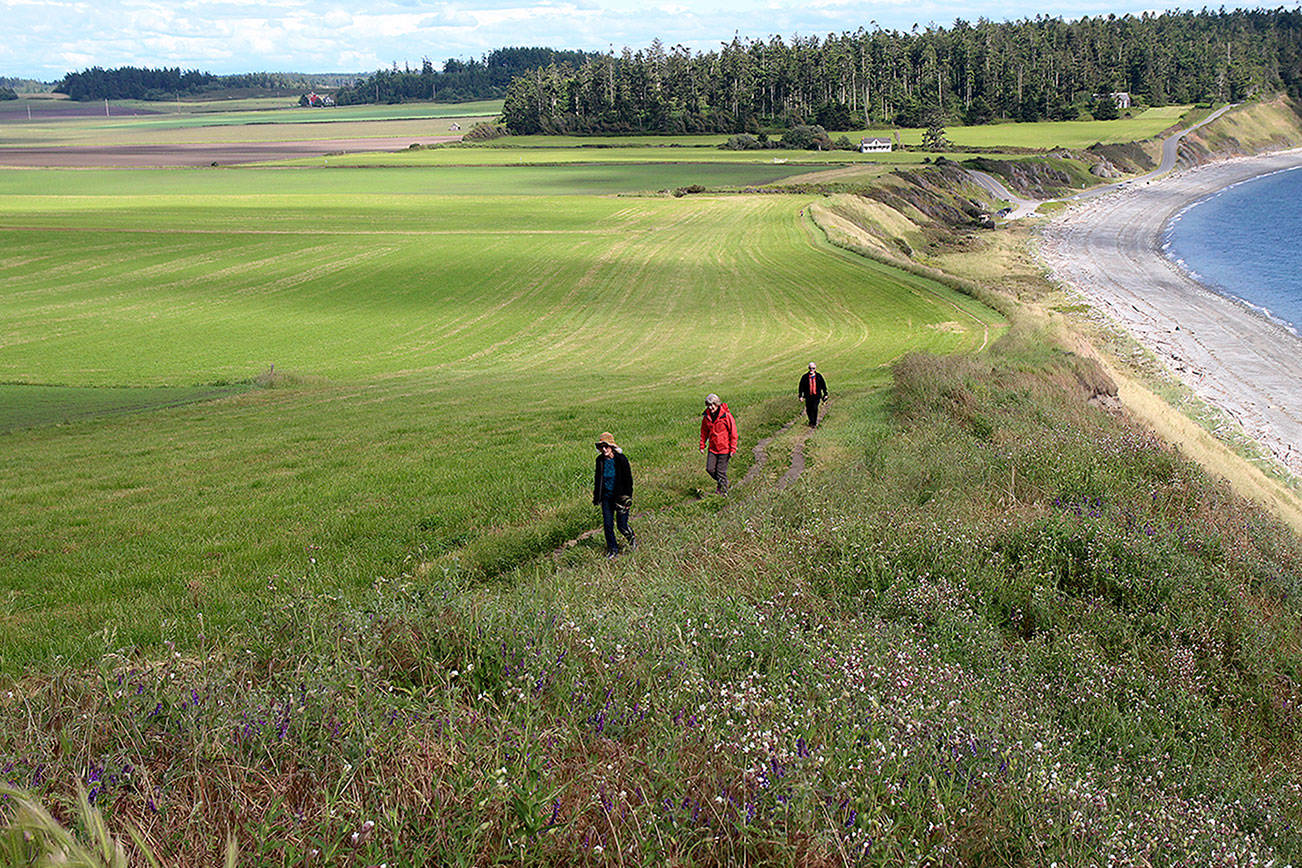A project to build a portion of a trail system in Central Whidbey may not get funded because of two Island County commissioners’ concerns about allegations of a link between Navy jet noise and health problems.
Commissioners Jill Johnson and Rick Hannold decided that a grant request to plan and build a trail will be contingent on whether the county health officer, two governmental entities and a nonprofit group publicly state that the project wouldn’t expose the public to potential health harm or cause other conflicts related to noise.
The third commissioner, Helen Price Johnson, didn’t find out about the unprecedented conditions placed on the grant until weeks after the action was taken. She pointed out that the process of awarding the grant has been many months long and no concerns were voiced earlier; also, the commissioners’ action seemed to conflict with recent changes to make the application process “more transparent.”
“To have this come at the last minute without a discussion with the commissioner whose district it is in seems really bad form,” she said. “I was really disappointed.”
The board will hold a meeting and take public comment on the issue at 10 a.m., Tuesday, June 13.
At the meeting last month, Johnson and Hannold placed the conditions on the nonprofit Whidbey Camano Land Trust’s application for grant dollars from Conservation Futures Program, a property-tax-supported fund aimed at protecting and preserving land of public interest. The Land Trust applied for a $50,000 maintenance-and-operation grant to add eight miles of new trail to the system in Central Whidbey.
The two commissioners required the Land Trust and three other entities — the county health officer, Ebey’s Landing Historical Reserve Trust Board and the National Park Service — to either testify or submit letters stating that there are no health concerns or other conflicts related to building trails that will expose hikers to the noise of EA-18G Growlers; the aircraft perform aircraft-carrier-landing practice at nearby Outlying Field Coupeville.
The action may once again aggravate tensions between North and Central Whidbey over the jet noise issue. Earlier this year, Johnson and Hannold were criticized for denying a $600,000 “rural counties economic development” grant to the Town of Coupeville for a community green project, citing town officials’ and citizens’ supposed lack of support for the Growlers. The Navy plans to increase the number of the jets based at Naval Air Station Whidbey Island and is in the midst of an environmental review process.
The county health officer and the National Park Service were among the individuals and entities that expressed concerns about the possibility that the jet noise causes health problems. Neither the Land Trust nor the trust board, however, submitted comments related to health effects.
Fran Einterz, a member of the reserve trust board, said in an email that he believes Johnson and Hannold must legitimately have health and safety concerns related to the jets.
“They are simply trying to ensure the safety of the 12,500 people who live in Central Whidbey, and one-million-plus tourists who visit each year, while they recreate in Ebey’s Landing National Historical Reserve, which is adjacent to the dangerous Navy airfield,” he said. “What other reason could the commissioners possibly have for stone-walling a Land Trust Conservation Futures grant that is supported by the entire community, to build more trails in the Reserve?”
Johnson said she doesn’t share the concerns about health impacts, but at the same time she said she’s “not interested in exposing people to potential harm.”
“If the community doesn’t have an issue, then I don’t have an issue,” she said. “If, however, the community has concerns, then the only thing I can do to address those concerns is restrict activities in areas known for intense noise. I will just work to ensure that we don’t continue to make public investments in areas deemed by the community as incompatible with flight operations.”
The Coupeville Town Council cited safety, economic and quality-of-life concerns in its comments on the Navy’s draft Environmental Impact Statement earlier this year.
Hannold pointed to the town’s comments in explaining his vote to deny the grant request for the town green. He said the fact that Land Trust Director Pat Powell is a member of the town council would be in the back of his mind the next time the Land Trust applied for Conservation Futures dollars.
Powell did not return a request for comment.
In an interview, Hannold said he was initially concerned about another aspect of grant, which was that the Land Trust was asking four times as much for planning than for actual construction, which he didn’t think made sense. He said he wants to have the issue explained.
Hannold said he didn’t even think about the noise issue until Johnson brought it up, but he felt she had a good point.
“We’re not going to go out and pay for a trail if these groups are saying it’s hazardous to your health,” he said.
Price Johnson was out of town and attended the meeting via telephone. She had to leave early, which was when the other commissioners took the action; she found out about it from a citizen weeks later.
She pointed out that the EIS comments from governmental groups and individuals said that the studies on jet-noise health concerns were inconclusive and that more study should be done. She questions how the county health officer or the other entities can state there are no health concerns when the Navy hasn’t made decisions related to the amount of Growler practice or whether more study is needed.
Price Johnson said the requirements placed by the other commissioners were unprecedented. The board didn’t, for example, make such a demand with the Fakkema Farm project last year, which is also near Navy jet practice.
“It’s completely arbitrary to require this of just one applicant for one project,” she said.



